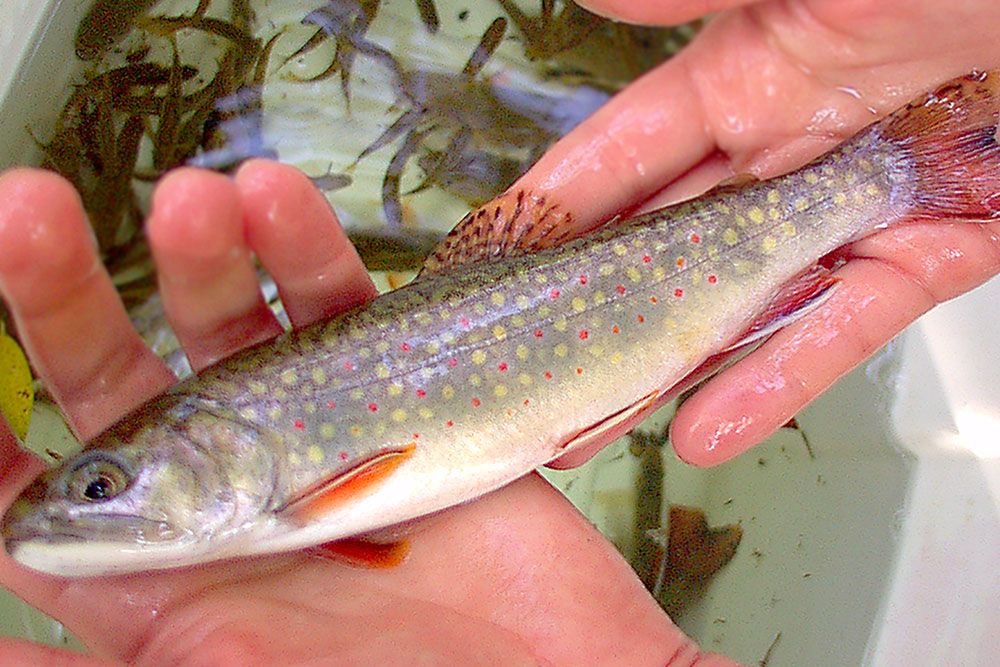Municipal Feature on Middlesex Centre

Landowners in Middlesex Centre have long history of taking positive stewardship actions in local watershed
Tributary streams contribute surface water, groundwater to system
By Ian Jean, Forestry and Land Stewardship Specialist, Ausable Bayfield Conservation Authority
The rolling fields and productive farmland of the Municipality of Middlesex Centre supply water to three of southern Ontario’s major watersheds: the Ausable, Thames, and Sydenham. The Ausable River itself does not flow through Middlesex Centre but several tributary streams contribute surface and groundwater to the system. These tributaries support important fish habitat and spawning areas within these streams and downstream in the main Ausable and, eventually, Lake Huron.
Farm owners and residents of Middlesex Centre have a long history of land stewardship and conservation work. For the past 75 years, Ausable Bayfield Conservation has been fortunate to be able to work with the community to help with conservation projects for the benefit of its residents and the broader watershed. During the last two decades alone, Middlesex Centre landowners have partnered with Ausable Bayfield Conservation to complete more than 50 conservation projects.
If you drive along any of the rural roads you will see the results of these efforts: tree-lined streams, field windbreaks, and wetlands. Less visible but equally important are in-field grassed waterways and erosion control berms. These stewardship projects are very important for controlling surface water flow, reducing soil erosion and flooding, and reducing sedimentation of streams. By keeping topsoil in fields, this infrastructure also improves soil health and agricultural productivity. That’s a true win-win.
Community leadership has been central to conservation. Local residents and farmer volunteers involved in the Middlesex Stewardship Council helped to support Ausable Bayfield Conservation efforts and projects in the area for many years. More recently, Trees for Lobo Township, a project started and run by community volunteers and now adopted by the Lions Club of Poplar Hill, provides trees for roadside planting in Middlesex Centre. During the past nine years, this initiative has seen more than 2,200 trees planted along roadsides in the township.
Nairn Creek is the largest tributary stream in the Ausable portion of Middlesex Centre. Fed by groundwater springs at its headwaters near Denfield, where it is also known there as Denfield Creek, the water runs south to Lobo Township, then turns northwest to join the Ausable at Nairn. Nairn Creek is significant in that it provides coldwater habitat for Brook Trout. This fish species has particular water quality requirements such as constant water flow, cold water temperatures, high oxygen concentrations, low suspended-solid concentrations, and streambeds free of silt. The presence of Brook Trout is a testament to local conservation efforts, and highlights the importance of ongoing stewardship and care to ensure the viability of the trout.
Funding support, from local, provincial and federal programs is available to local landowners for many conservation projects. One of the key roles of Ausable Bayfield Conservation is providing technical advice and assistance in securing financial support for these beneficial projects. As we celebrate 75 years at Ausable Bayfield Conservation Authority, we look forward to continuing this important work in partnership with the community.
– In 2021, Ausable Bayfield Conservation Authority (ABCA) is celebrating its 75th anniversary (1946-2021) and 75 Years of Conservation. ABCA is honouring its 12 member municipalities, during this anniversary year, for their partnership, over the past 75 years, which helps to protect life and property, water, soil, and habitat for all living things.
To learn more visit abca.ca and this web page:
#AusableBayfield75th